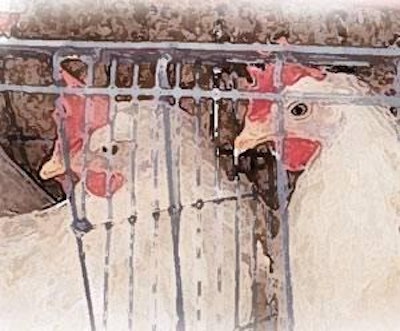
Less land is available for food production every day due to growing human population, urbanisation, industrialisation, chronic drought and conversion of agricultural land for other purposes. To optimise food production from the minimum area, farmers have adopted modern methods of animal production developed by agricultural scientists after several decades of research. In future, it will only be possible to feed the human population through intensive production methods that yield the highest output per unit of land, at lower cost.
Cage rearing of laying hens is just one example of a modern intensive method developed by scientists after several decades of research to optimise output without adversely affecting bird welfare.
Opposition from activists
Animal welfare activists and vegans object to intensive animal production, including layer cages, which they describe as ‘animal factories' and regard as cruel. They exaggerate both the cruelty to the birds and the harmfulness of foods of animal origin, suppressing many facts and benefits of intensive production. Animal welfare is an important consideration but it should not become a matter of extremism. If this production method were cruel, mortality rate would be higher and both egg production and bodyweight would be lower than with extensive systems. In fact, we get more eggs, higher bodyweights and lower mortality in cages, indicating better physiological functions and health status of the hens.
Animal welfare activists are strong politically and financially, and they are pressuring governments in developed countries to ban layer cages and other animal production methods they regard as unacceptable.
Cage hens versus pet animals
Welfare activists oppose layer cages and yet they raise no objection to keeping pets in cages, which is nothing but slavery to the animals: pets have to be obedient to their owners. They spread zoonotic diseases to pet keepers, especially to children. Like humans, all animals love freedom. We have domesticated animals for our food, work and happiness, at the cost of their freedom.
If keeping hens in cages is cruel, so is restriction of freedom imposed by keeping animals for any food, work, racing, laboratories, vaccine production, zoos and aquaria. Surely we cannot go back and sacrifice all these benefits of animals, which are well looked after despite their loss of freedom. Eggs from caged hens improve the nutrition of several billions of human lives. Keeping an animal for food is more justifiable than for other purposes. There is no moral and legal justice to ban layer cages and encourage the keeping of pets.
Space allowance
Cage rearing of hens is not an inhumane act. Welfare activists argue that an area of 70 square inches is too small for one hen. If it made the hen uncomfortable, egg production and survival would be compromised, which they are not when compared to more extensive systems. The recommended space allowance was not an arbitrary decision: it was based on years of research by animal scientists.
Conclusion
Cage rearing of hens is not cruel. This method gives optimum egg output for minimum cost a most important consideration in these days of rising food prices worldwide, especially for those with low or modest incomes in developing countries. More extensive systems will be unable to supply adequate eggs. Governments should encourage cage rearing of hens (and other intensive low-cost methods of food production) to supply nutritious food for a growing human population.





.jpg?auto=format%2Ccompress&fit=crop&h=167&q=70&w=250)











